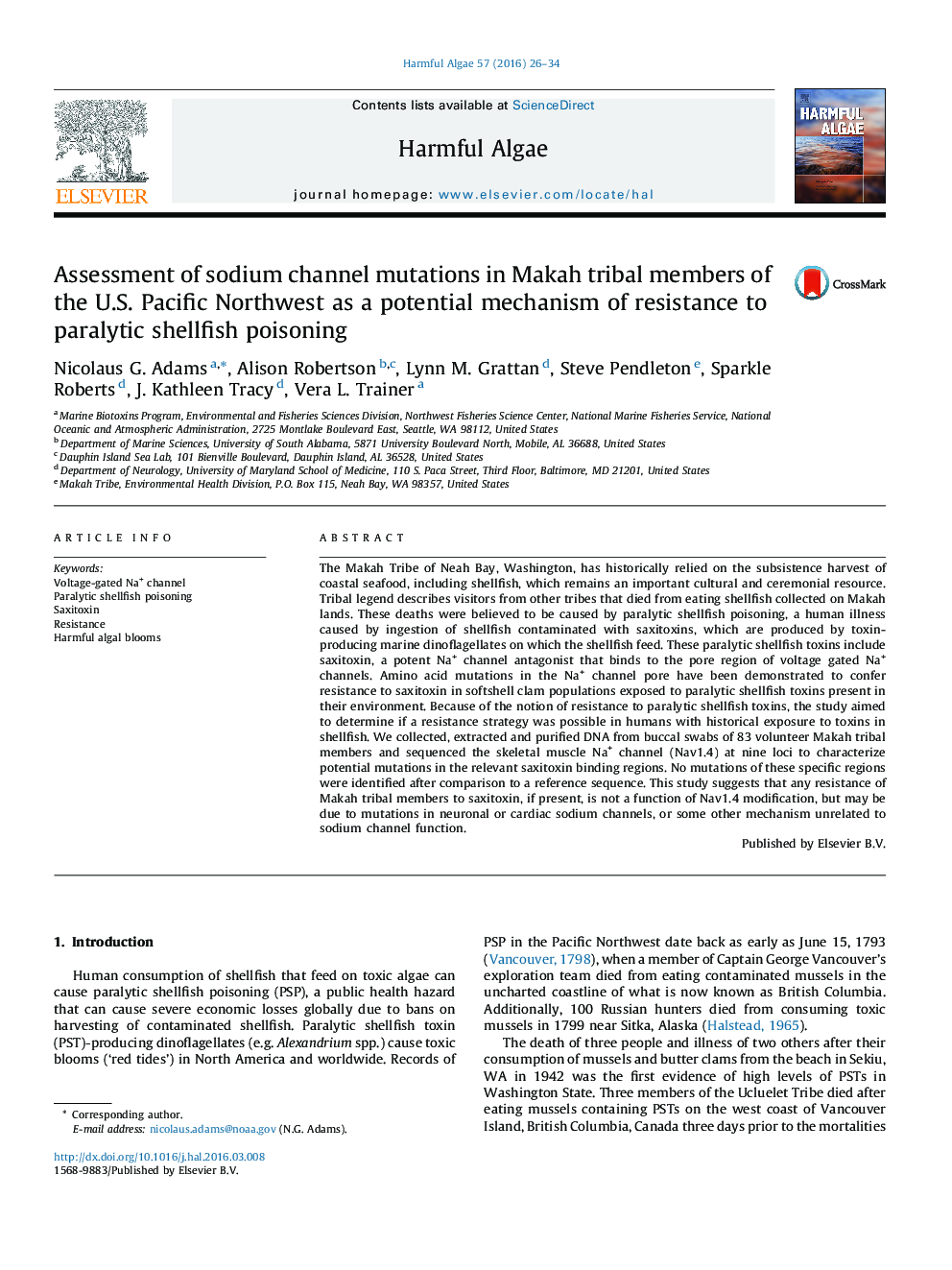| کد مقاله | کد نشریه | سال انتشار | مقاله انگلیسی | نسخه تمام متن |
|---|---|---|---|---|
| 4545173 | 1327421 | 2016 | 9 صفحه PDF | دانلود رایگان |
• Skeletal muscle Na+ (Nav1.4) channels of Makah members were sequenced at 9 loci.
• Sequences were analyzed for variations potentially conferring saxitoxin resistance.
• No mutations at saxitoxin binding sites in sodium channel pore regions were observed.
• Nav1.4 channels likely do not confer saxitoxin resistance in Makah Tribe members.
The Makah Tribe of Neah Bay, Washington, has historically relied on the subsistence harvest of coastal seafood, including shellfish, which remains an important cultural and ceremonial resource. Tribal legend describes visitors from other tribes that died from eating shellfish collected on Makah lands. These deaths were believed to be caused by paralytic shellfish poisoning, a human illness caused by ingestion of shellfish contaminated with saxitoxins, which are produced by toxin-producing marine dinoflagellates on which the shellfish feed. These paralytic shellfish toxins include saxitoxin, a potent Na+ channel antagonist that binds to the pore region of voltage gated Na+ channels. Amino acid mutations in the Na+ channel pore have been demonstrated to confer resistance to saxitoxin in softshell clam populations exposed to paralytic shellfish toxins present in their environment. Because of the notion of resistance to paralytic shellfish toxins, the study aimed to determine if a resistance strategy was possible in humans with historical exposure to toxins in shellfish. We collected, extracted and purified DNA from buccal swabs of 83 volunteer Makah tribal members and sequenced the skeletal muscle Na+ channel (Nav1.4) at nine loci to characterize potential mutations in the relevant saxitoxin binding regions. No mutations of these specific regions were identified after comparison to a reference sequence. This study suggests that any resistance of Makah tribal members to saxitoxin, if present, is not a function of Nav1.4 modification, but may be due to mutations in neuronal or cardiac sodium channels, or some other mechanism unrelated to sodium channel function.
Journal: Harmful Algae - Volume 57, Part B, July 2016, Pages 26–34
